|
|
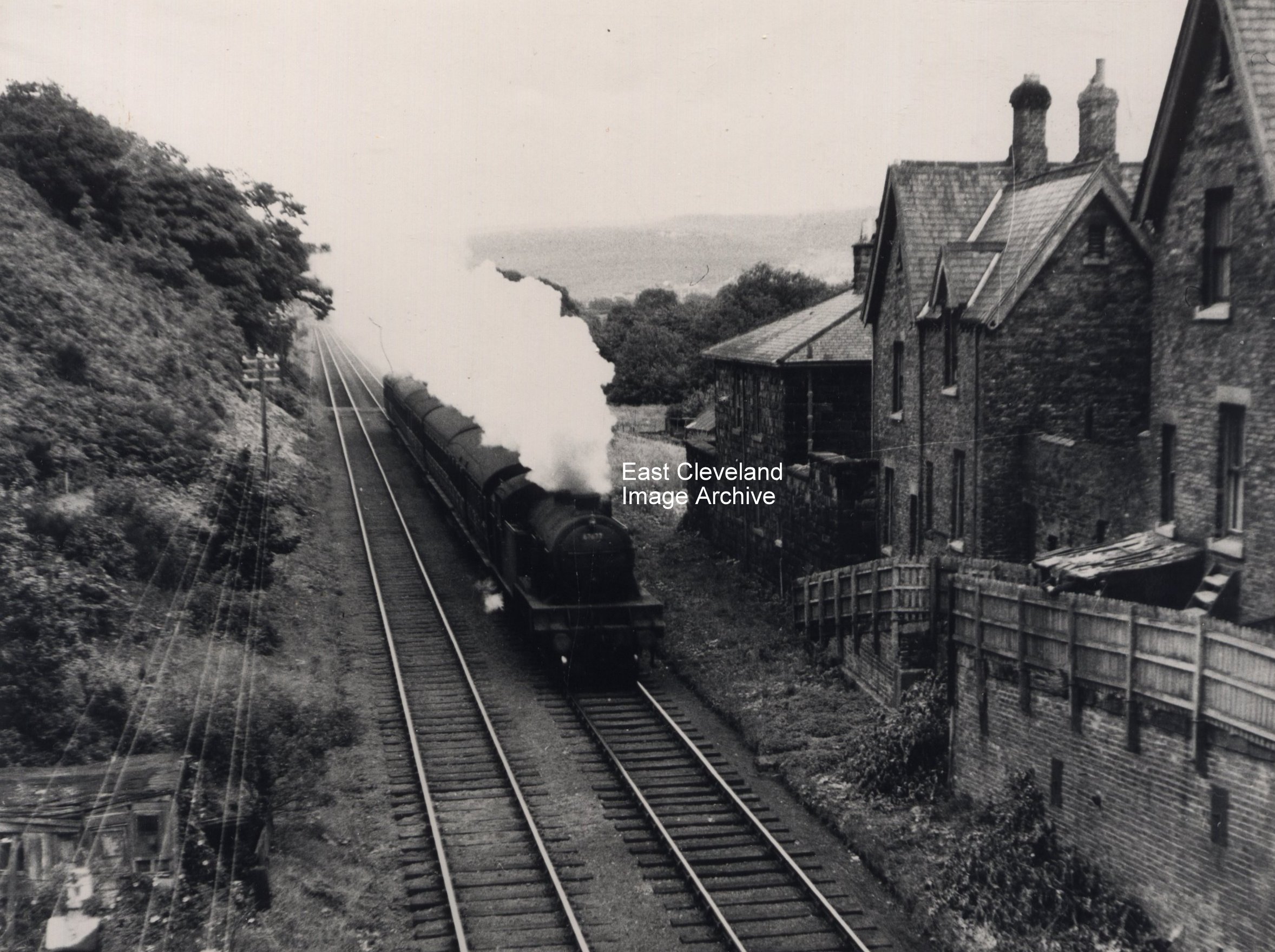
Taken from the old road bridge that carried the A171 over the railway at Slapewath (the scene of many minor bumps in the distant past), the picture shows the backs of the houses at Slapewath. The train is approaching Spawood junction from Boosbeck. It’s difficult to visualise this view now as the A171 re-alignment was so major, I seem to remember two bridges, one over the railway, one over the beck and one rail bridge over the road (to South Skelton or Park) pit) at Fancy Bank (the remains of the railway can be seen on the hillside as a gated forest road). Some of the remains of the old road and rail structures can be seen with the beautiful viaduct at Spawood (now becoming enshrouded in trees) and the road bridge over the beck adjacent partly covered by the modern A171 as it sweeps down Fancy Bank. I think the locomotive is numbered 67678, which would make it a V3 2-6-2T, but it’s not an easy one to see.
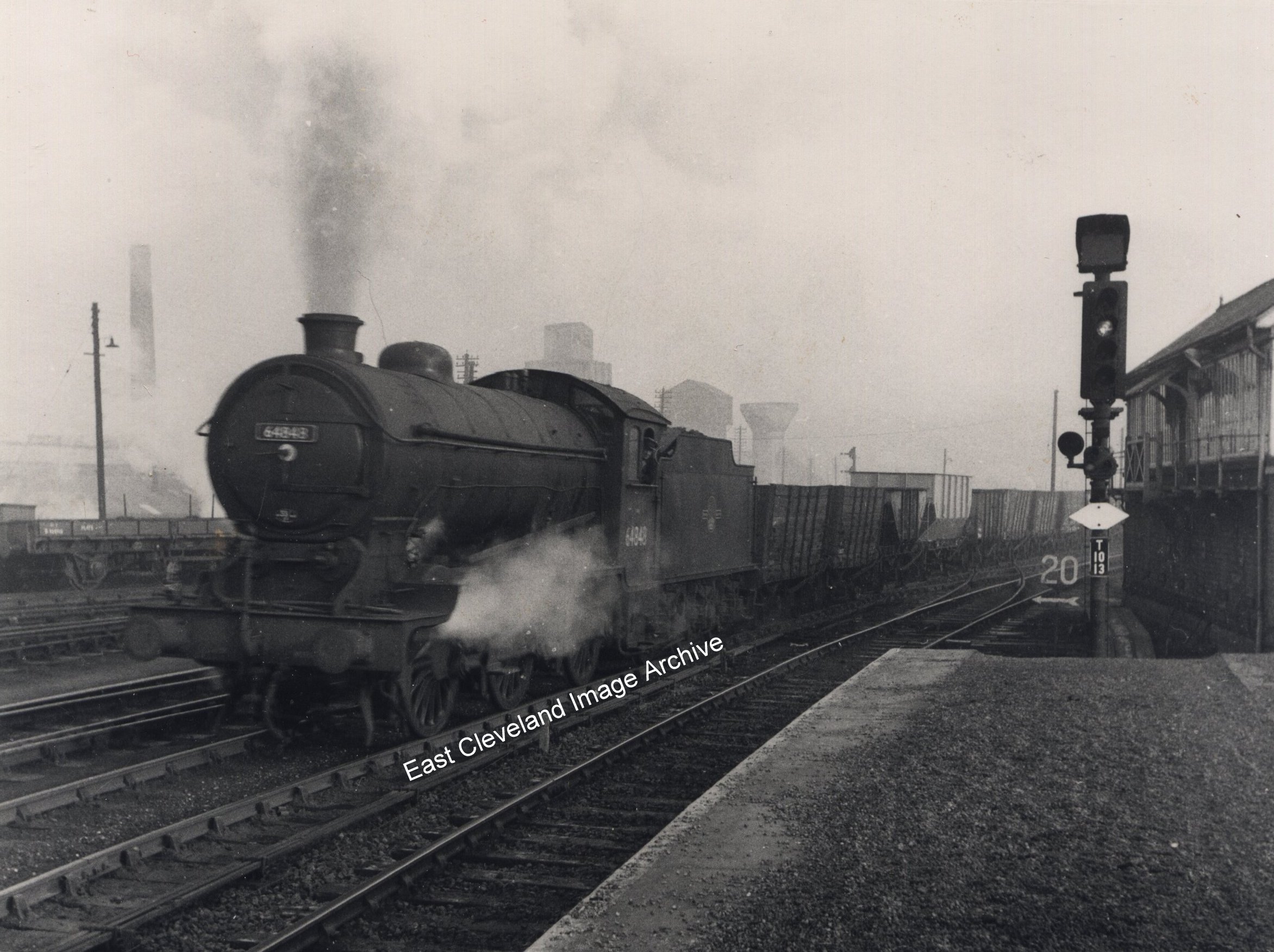
Not so old here – we’ve got colour light signals. A goods train, headed by 0-6-0 class J39 64848, chugs ponderously past; east of Thornaby Station, heading west on the goods line. We are told by Dale: ”The locomotive is J39 64848, of West Auckland (51F); it has a white smokebox door boss. This had been painted to indicate all 51F sheded locomotives by the shed boiler inspector.” We are now advised by Geoff Swales: ”The white smokebox door boss was painted by West Auckland boilersmith, (not inspector) – Gordon Reed – boilersmith from mid 1950’s until shed closure.”
Thanks Simon Chapman, Alan Woods, Dale and Geoff Swales for the updates.
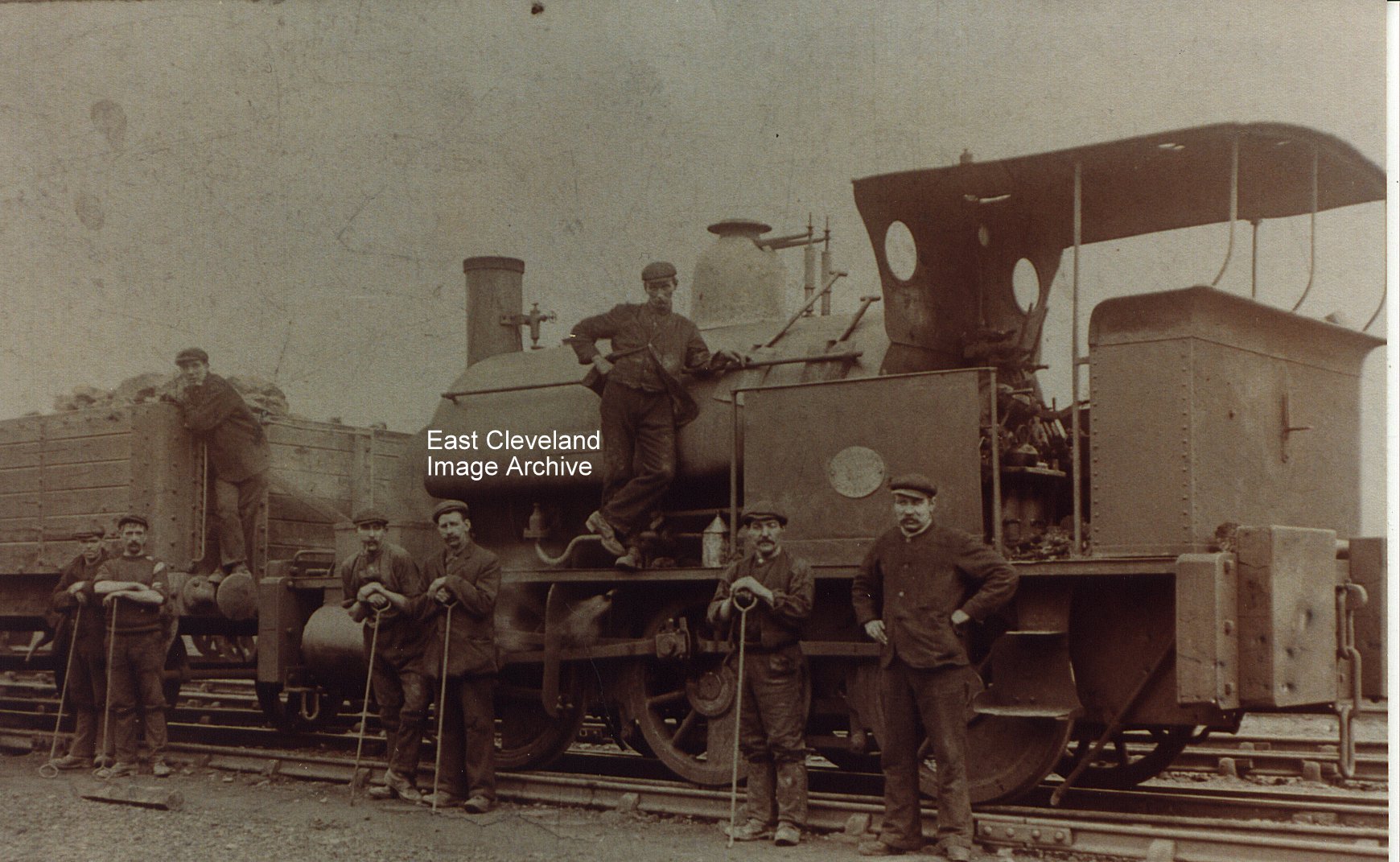
This photograph and others of the locomotive appear in the book ‘The Steam Locomotive Era of the Skinningrove Iron Company Ltd’ by David W. Husband [Published by Peter Tuffs, 2003]. The book gives the following information about the locomotive: ‘MINNIE’, built by Fox Walker of Bristol in 1878, works number 385. Entered service at Skinningrove in 1883, previously with John Waddell (of Paddy Waddell’s Railway fame!), contractor for the Loftus-Whitby railway, 1880-83. MINNIE was employed as a general use locomotive at Skinningrove and in this image is on yard and gantry duty about 1920. Over the years MINNIE was rebuilt, notably her cab and steam dome. She was the longest-serving steam locomotive at Skinningrove and probably the best-loved. In August 1965 she moved to the Kent & East Sussex Railway for preservation and was still in steam in the late 1970s. In 1980 she was presented to Dover’s Transport Museum and by 2003 was at the Mangaps Farm Railway, Essex.
Thanks to Alan Woods for the information.
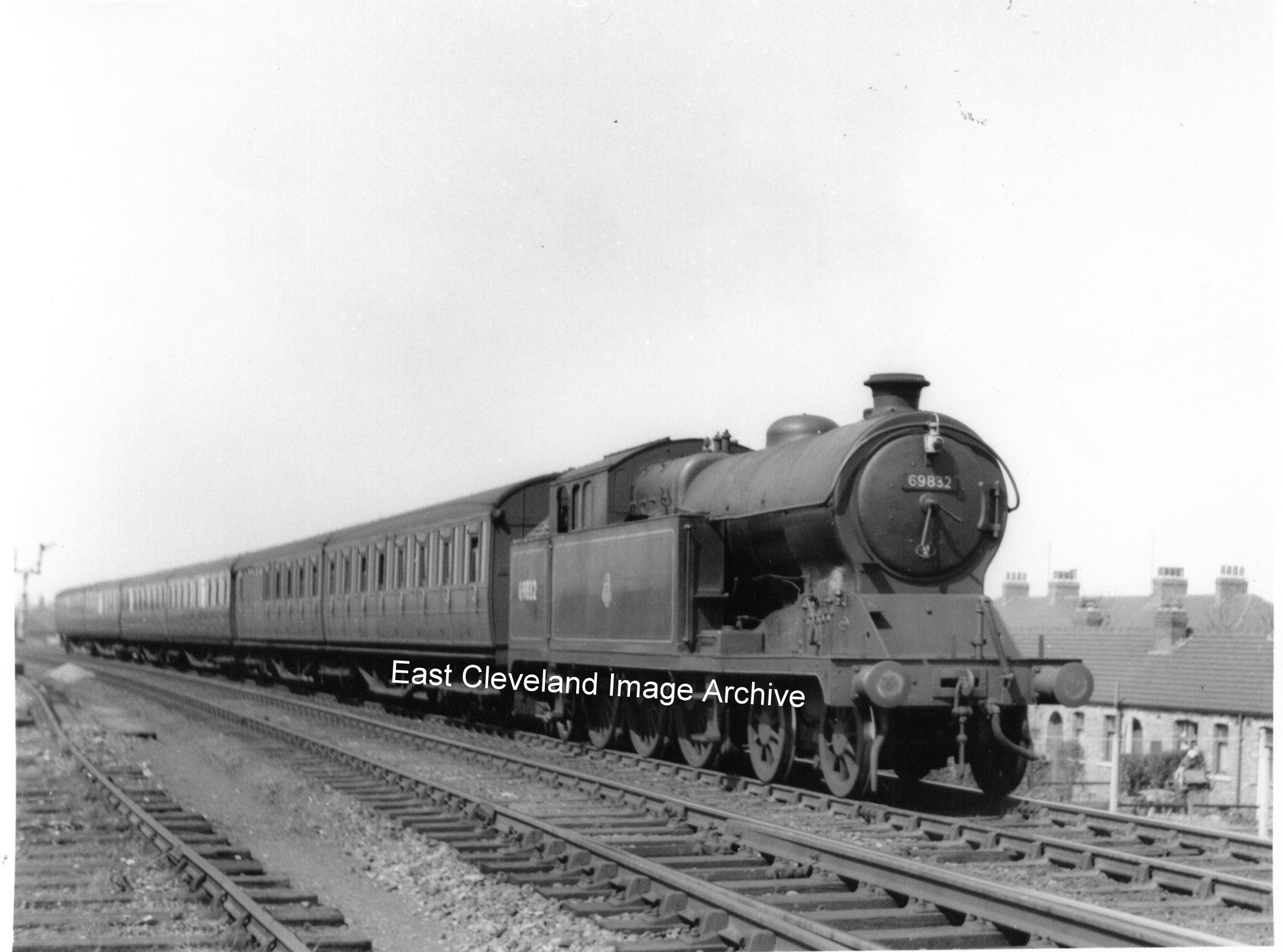
This is another ex-Great Central Railway Robinson A5 number 69832 with a Darlington – Saltburn train between Redcar East and Marske.
Chris Davies advised: ”Locomotive is of G. C. R. Robinson design; but this version was in modified form to work in the north east and built by Hawthorn Leslie in October 1925 and withdrawn in November 1958.”
Thanks to Chris Davies for that update.
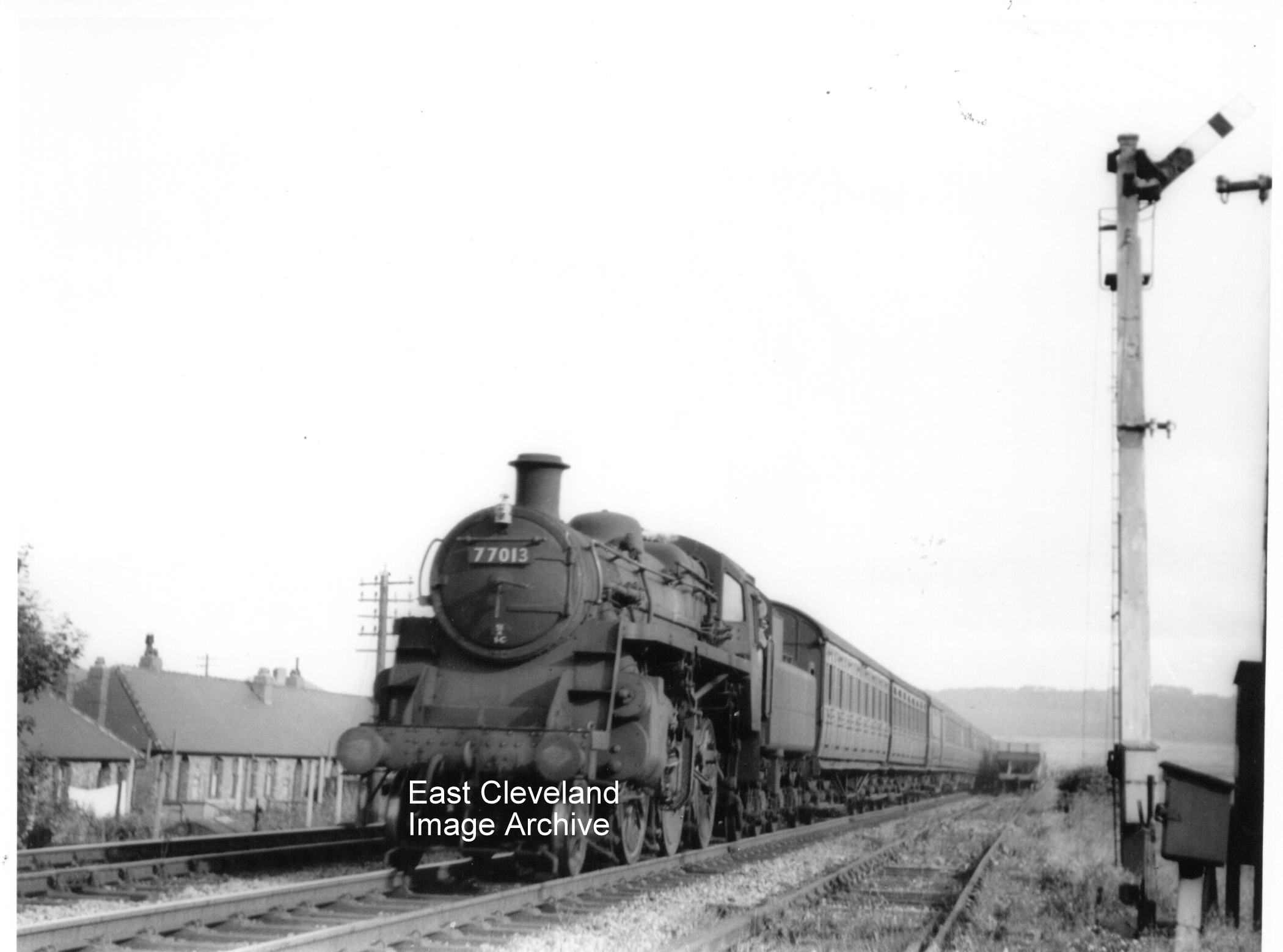
A classic image of a Saltburn to Darlington train headed by a BR Standard Class 3 2-6-0 locomotive number 77013; passing the home signal approaching Redcar East Halt.
Information courtesy of ”Bald Eagle” who advised us that this is a Class 3 locomotive.
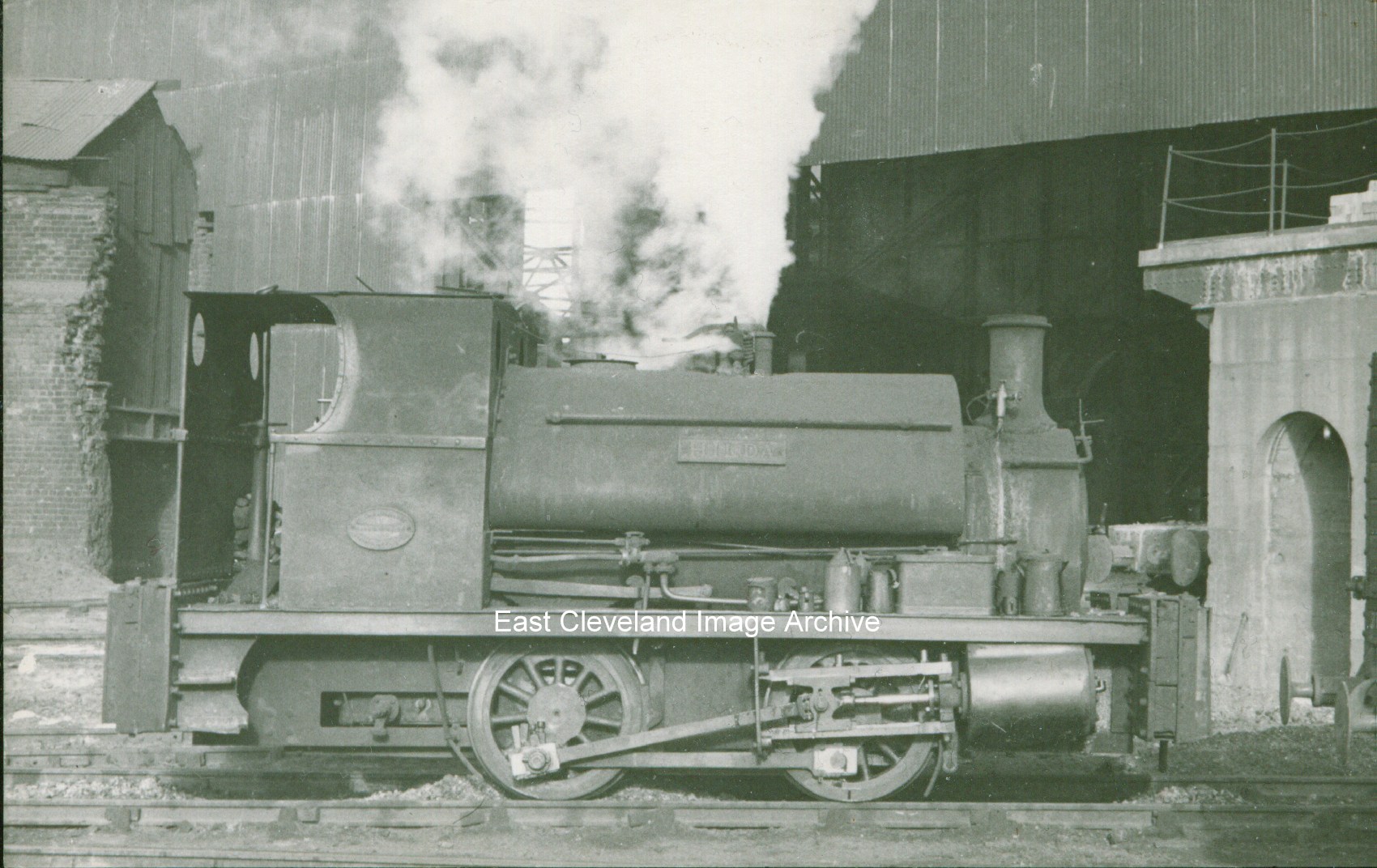
Another of Skinningrove’s delightful little locomotives, ‘Hilda’ dumb-buffered like Minnie; built by Thomas Peckett of Bristol in 1899. Minnie was built by Fox Walker of Bristol in 1878 – same town different works!
Information courtesy of D. W. Husband and Eric Johnson.
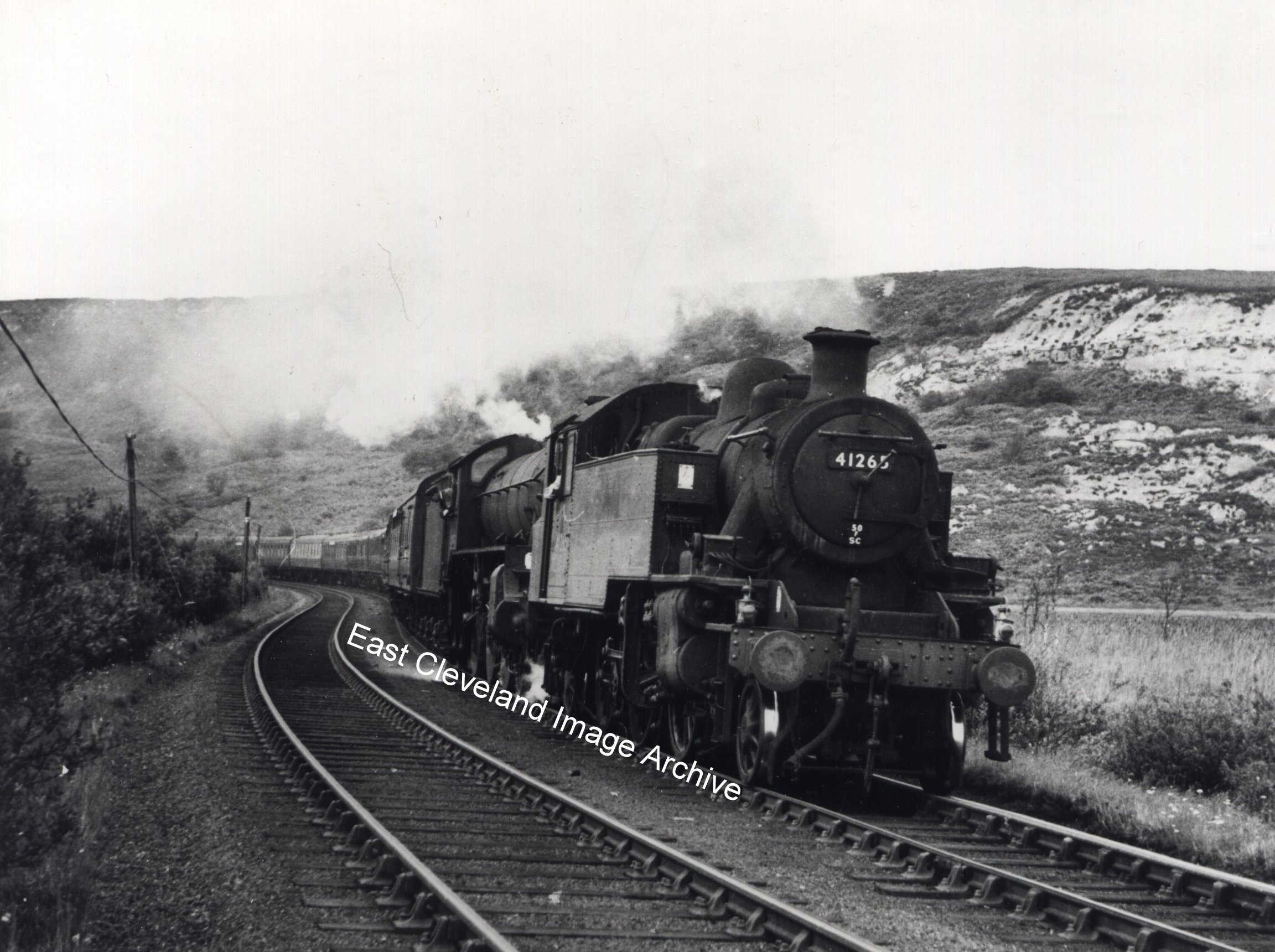
Double-headed by an Ivatt 3MT 2-6-2T number 41265 (a Whitby and Moors Excursion) rounds the reverse curve at Fen Bog, a few miles south of Goathland; the long train from the West Riding requiring assistance up the gradients out of Levisham. The second locomotive is probably a B1. This location is also close to Fylingdales Moor, sitting roughly below the radar station.
Information adapted from comments courtesy of Mark.
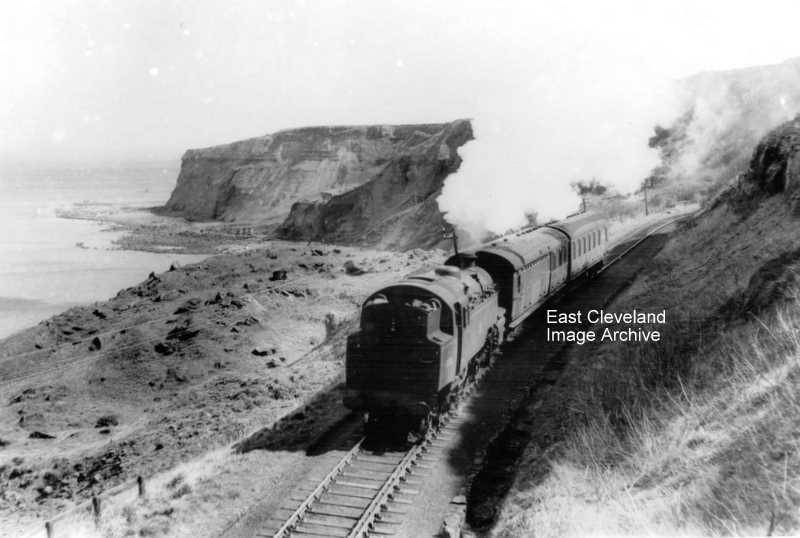
Another local commuter train underway, headed by a BR Standard tank, skirting the cliff edge at Kettleness. The unusual configuration of the first coach can be clearly seen in this image. A beautiful picturesque route, this would make a lovely leisure route today (after re-alignment to avoid the continuously advancing cliff edge!). Russ Pig0tt comments about the first carriage: “There’s nothing unusual about the first coach it is a Brake third, basically a second class coach (when built bizarrely there were only first and third class; second had been phased out) with guard’s accommodation and luggage space. Parcels and mail were still conveyed by trains such as this and continued on local services until the late 1980s.”
Image courtesy Maurice Grayson and thanks to Russell Pigott for the clarification of the Editor’s query.
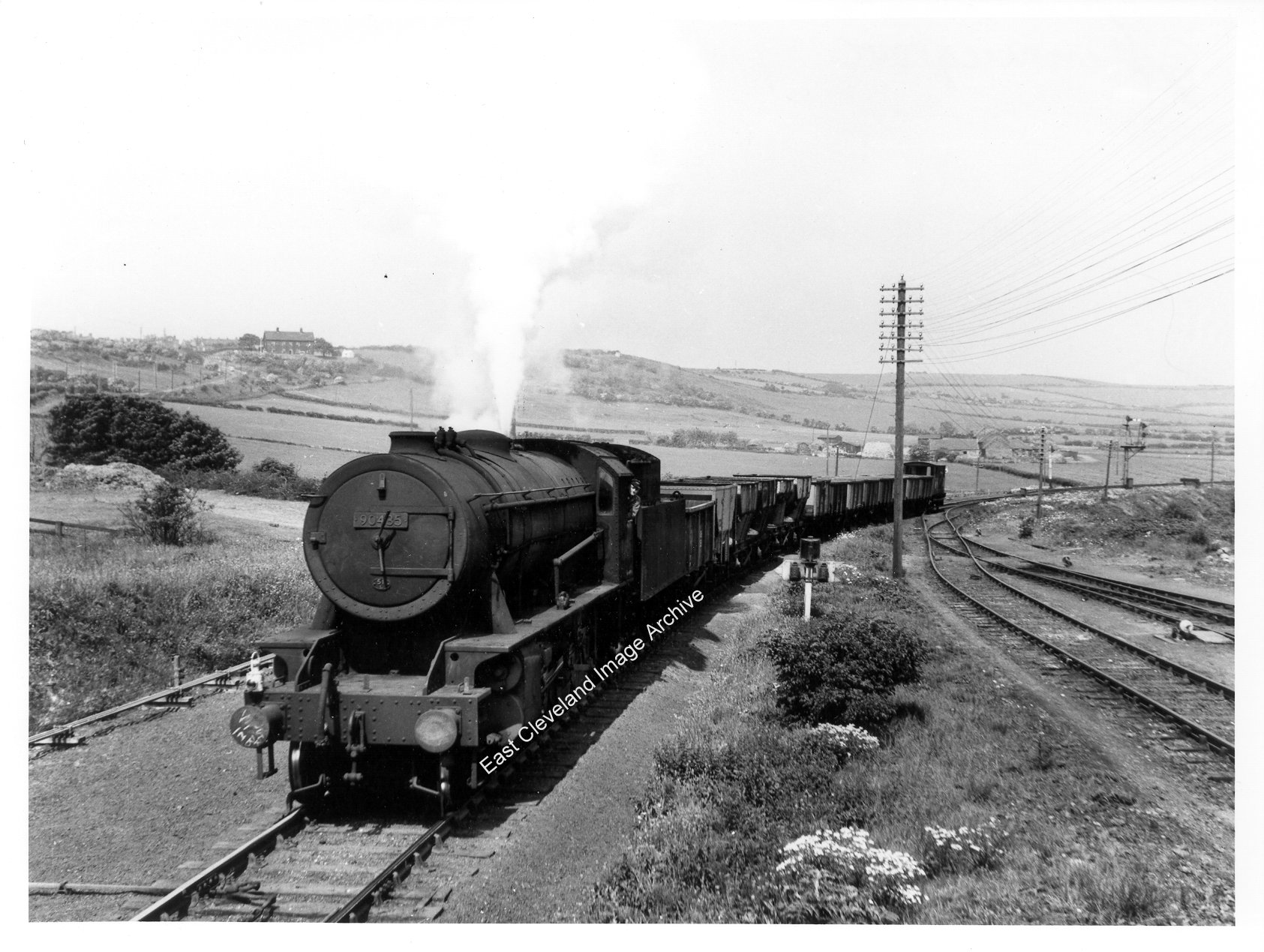
A train of empty iron-ore wagons rolls towards Skinningrove station, Brotton Cottage Hospital (Brotton Miner’s Hospital) in the background, headed by a rather grimy ’Austerity’ class WD/8 9 2-8-0 locomotive whose number is 90435. Taken in 1959 this image shows the train is not bound for Skinningrove Iron works, the reception sidings are the lines branching away on the right.
Image believed to originate from the Neville Stead Collection, but came to the Archive from the Pem Holliday Collection.
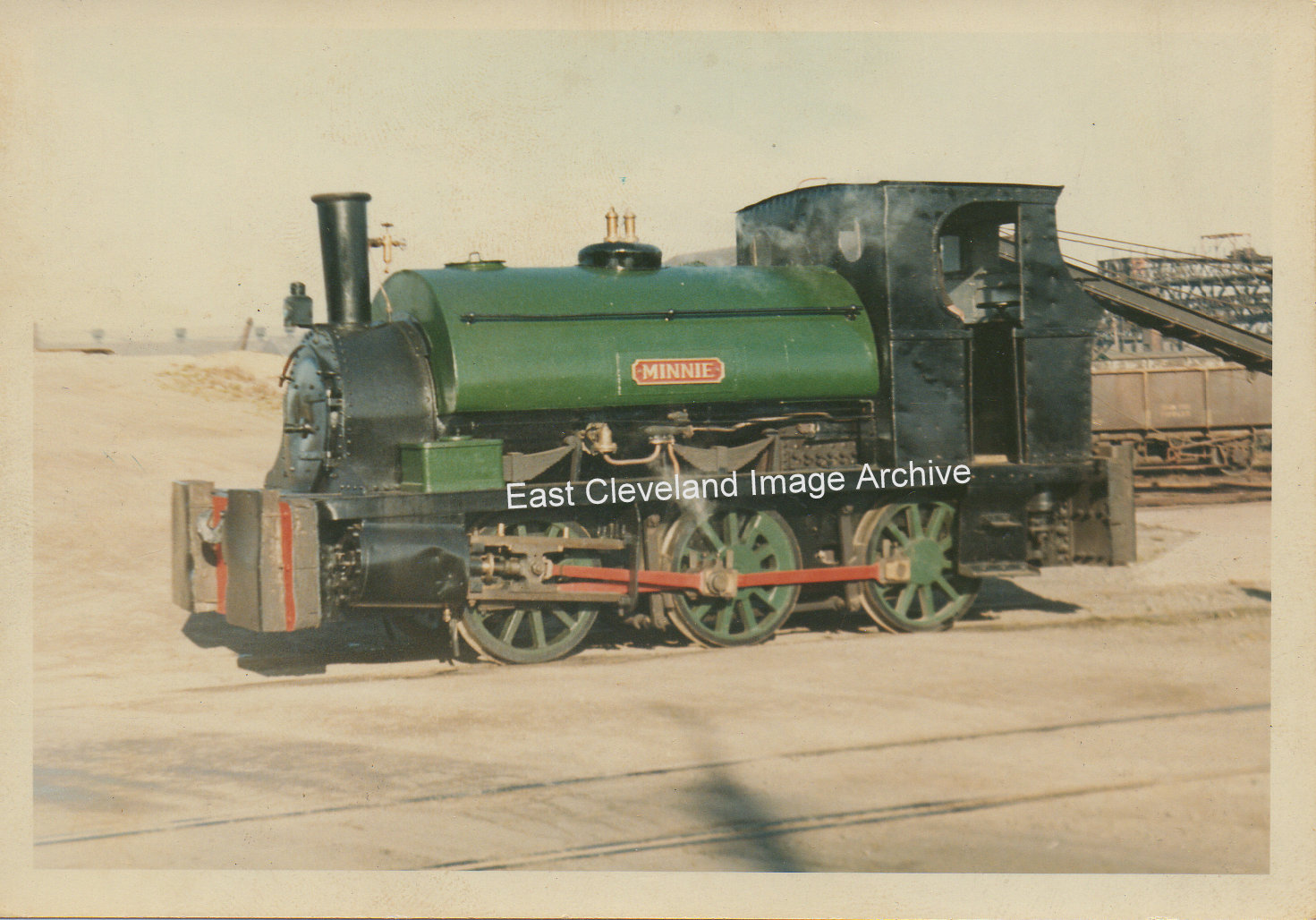
Minnie about to leave Skinningrove Iron and Steel Works at the end of her life there. Notice the changes in her appearance; dumb buffers replaced the sprung buffers so making it easier to push shunt the slag pots, iron ladles and ingot bogies; a full crew cab (obviously taken from another redundant locomotive) and different safety valve arrangement, she had obviously had a refit during her long life on ”the ’Grove”.
Image courtesy of the Pem Holiday Collection.
|
|










Recent Comments